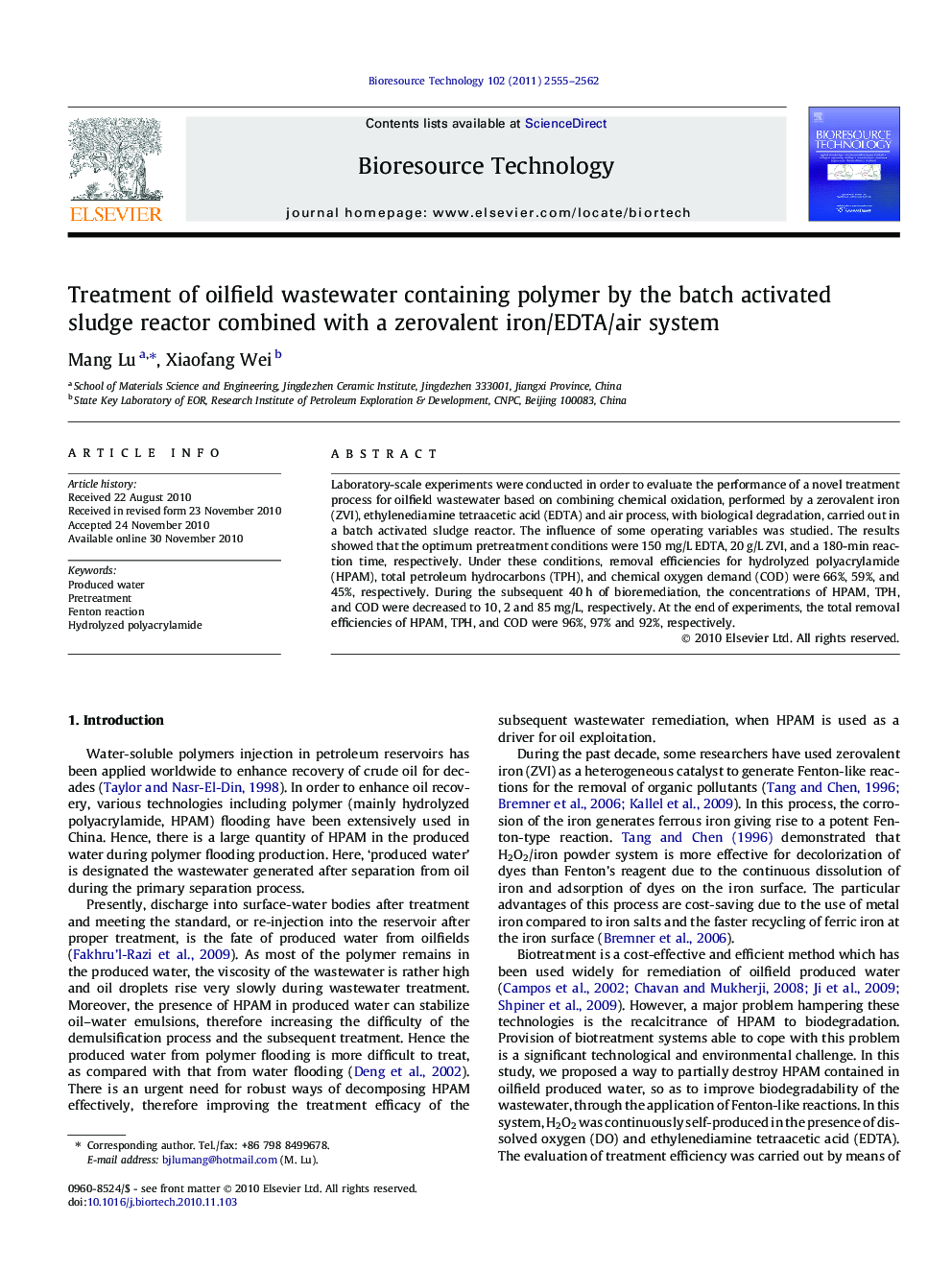| Article ID | Journal | Published Year | Pages | File Type |
|---|---|---|---|---|
| 10395387 | Bioresource Technology | 2011 | 8 Pages |
Abstract
Laboratory-scale experiments were conducted in order to evaluate the performance of a novel treatment process for oilfield wastewater based on combining chemical oxidation, performed by a zerovalent iron (ZVI), ethylenediamine tetraacetic acid (EDTA) and air process, with biological degradation, carried out in a batch activated sludge reactor. The influence of some operating variables was studied. The results showed that the optimum pretreatment conditions were 150Â mg/L EDTA, 20Â g/L ZVI, and a 180-min reaction time, respectively. Under these conditions, removal efficiencies for hydrolyzed polyacrylamide (HPAM), total petroleum hydrocarbons (TPH), and chemical oxygen demand (COD) were 66%, 59%, and 45%, respectively. During the subsequent 40Â h of bioremediation, the concentrations of HPAM, TPH, and COD were decreased to 10, 2 and 85Â mg/L, respectively. At the end of experiments, the total removal efficiencies of HPAM, TPH, and COD were 96%, 97% and 92%, respectively.
Related Topics
Physical Sciences and Engineering
Chemical Engineering
Process Chemistry and Technology
Authors
Mang Lu, Xiaofang Wei,
